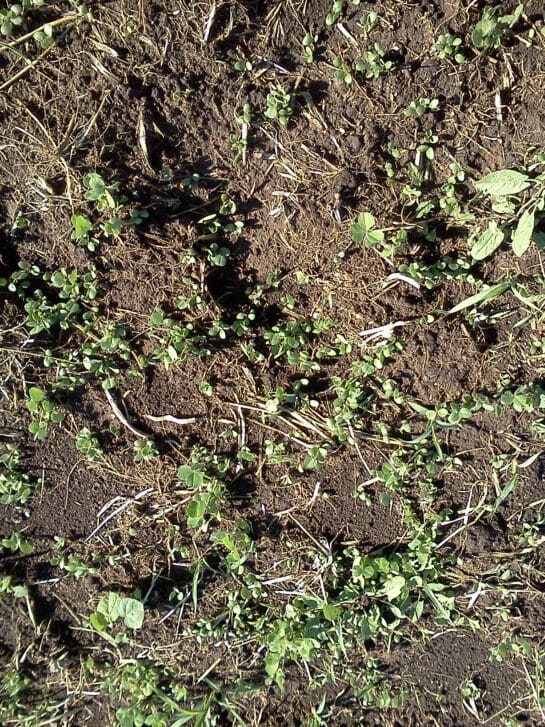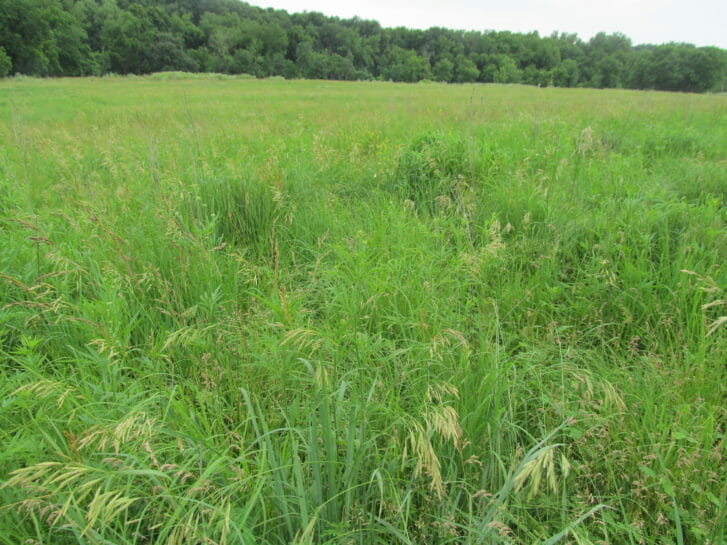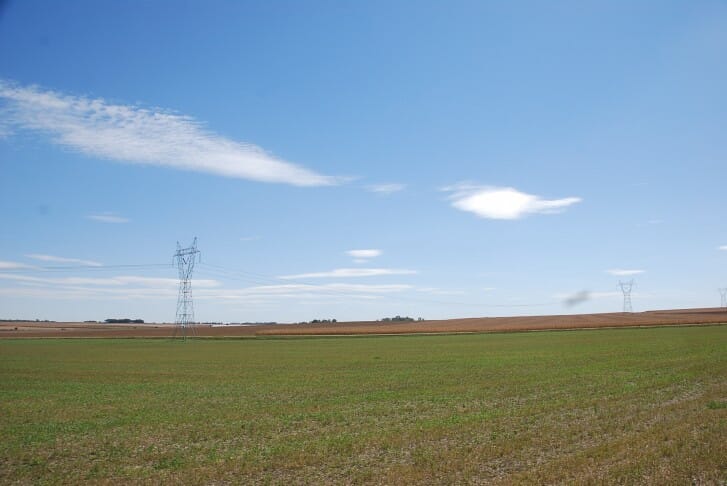Scoring Soil Health
The Haney soil test seems to be the current rising trend in soil health and sustainability. Here I’ve tried to summarize basics of the test, including what it does, what it demonstrates, and possible uses.
It’s hard to quantify soil health. In person, one can stick a shovel into a field, and see, smell, and touch it – which certainly helps. That crumbly, dark, cottage-cheese looking stuff full of roots and bits of organic matter – that’s a good sign! But it’s difficult to quantify that. As a scientist I tend towards numbers and categories…but even for the more visually-based, how much would it mean if a farmer told you that his soil looked like 2% cottage cheese curds instead of full-fat? Or was milk chocolate brown instead of dark chocolate? While this gives a sense of the soil being viewed, it isn’t a very accurate impression of quality.
Most common soil tests are based on soil nutrient quantity – which is related to, but not directly correlated with, soil “health” as it’s being defined these days. The idea of active microbial systems, living roots, mycorrhizae, water-holding capacity…that is not evident in your standard NPK recommendation.
There are scientists trying to change that. The current test, and again hot new trend, is the Soil Health Tool, commonly the Haney Test after one of its creators, Rick Haney (a soil scientist with USDA).
In a nutshell, the Haney Test considers many of the same soil nutrients as standard soil tests, but incorporates the microbial activity of the soil. Soil microbes are responsible for converting nutrients to (and from) plant-useable forms, creating the hyphae and mycorrhizae that maintain soil structure and aggregation, and contribute to organic matter production through decomposition. Some presentations and sites depict soil microbes as a “gear” that turns the other “gears” of organic carbon and nitrogen, which drive plant growth.
More specifically, a soil sample is dried, then rewetted and incubated. The microbes slow or cease activity when soil is dried but increase again with the addition of water and organic acids (H3A, similar to those of roots, aka that ‘root exudates’ you’ve probably heard of). The microbes then break down the acids, which generates CO2. The size of this “CO2 burst” correlates to the amount of microbes. It is also correlated with N mineralization (conversion of soil N into a plant-useable form), since microbes are largely responsible for that as well.
Other aspects of soil health, organic carbon and nitrogen, are considered in the test as well…but at a different level than in most soil tests. In the Haney Test, water-soluble organic C and N are tested – these are the forms more available to the microbes – whereas standard soil tests only evaluate total organic C (soil organic matter). The water-extractable organic C pool is much smaller than the total organic C pool. Advocates of the test say that while soil organic matter is a good indicator of soil health, even better is the water-extractable organic C.
The water-extractable organic C and N are used to calculate a C:N ratio. It’s becoming common knowledge that C:N ratio in the soil partially determines microbial community dynamics – a high C:N means that N (and P) are tied up in the microbes themselves and will not be available for plants. An ideal Haney Test C:N ratio is between 8:1 and 15:1.
There’s a lot of science involved here…so how does a farmer who sent in samples know what it all means? First, a number of the parameters measured are used in a giant equation to generate a Soil Health Calculation. This score may be from 1 to 50+, with the idea that over time and with different management, the improved health of a given field can be quantified.
In addition, the Haney Test comes back with an excel file of data and some explanations and recommendations. The microbial activity information is combined with standard soil tests to estimate how much N, P, and K is available in your soil (and to suggest fertilization schemes). Standard tests measure the amount of a nutrient currently available to the plants – a snapshot, really – while the Haney test also includes potential available nutrients, based on microbial activity (and remember that microbes are converting minerals into plant-useable forms, in healthy soils). In a healthy soil, then, the fertilizer recommendations for N, P, and K will be less than from a standard soil test. Hello, fertilizer savings! Renowned cover cropper David Brandt has cut fertilizer expenses by 50% on some fields. Soil health parameters (the CO2 burst and water-extractable C and N values, and so on) are presented as well, along with suggestions for cover crops to add.
The Haney Test seems a neat tool for farmers looking to monitor their soils over time. Three laboratories in the US currently offer the Haney Test: Ward Labs in NE, Woods Ends Labs in ME, and Brookside Labs in OH. While expensive – about $50 at Ward Labs – there seems to be a lot of neat information there. I hope to include Haney tests as part of pasture and soil monitoring projects in the PFI Livestock On-Farm Research Program.
Resources:
http://www.farmanddairy.com/news/new-soil-test-measures-soil-health/175574.html
http://cornandsoybeandigest.com/conservation/new-soil-test-tracks-microbial-activity
http://woodsend.org/soil-health-test/
http://www.wardlab.com/haney/haney_info.aspx
GREAT powerpoint about the test: http://www.nrcs.usda.gov/Internet/FSE_DOCUMENTS/nrcs144p2_043902.pdf
http://link.springer.com/article/10.1007/s003740000294#page-1
https://dl.sciencesocieties.org/publications/sssaj/abstracts/64/2/613
https://dl.sciencesocieties.org/publications/sssaj/abstracts/60/4/SS0600041133



